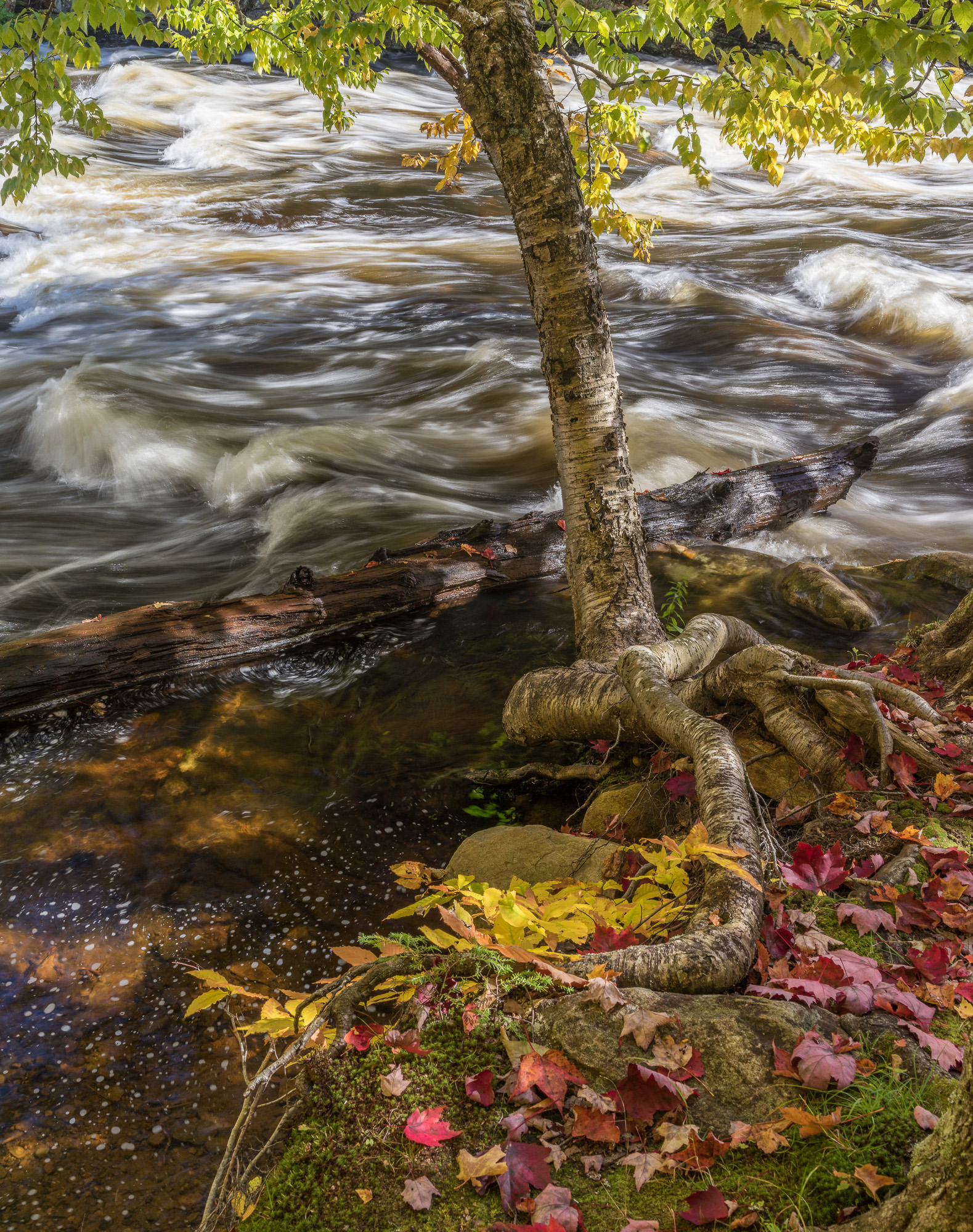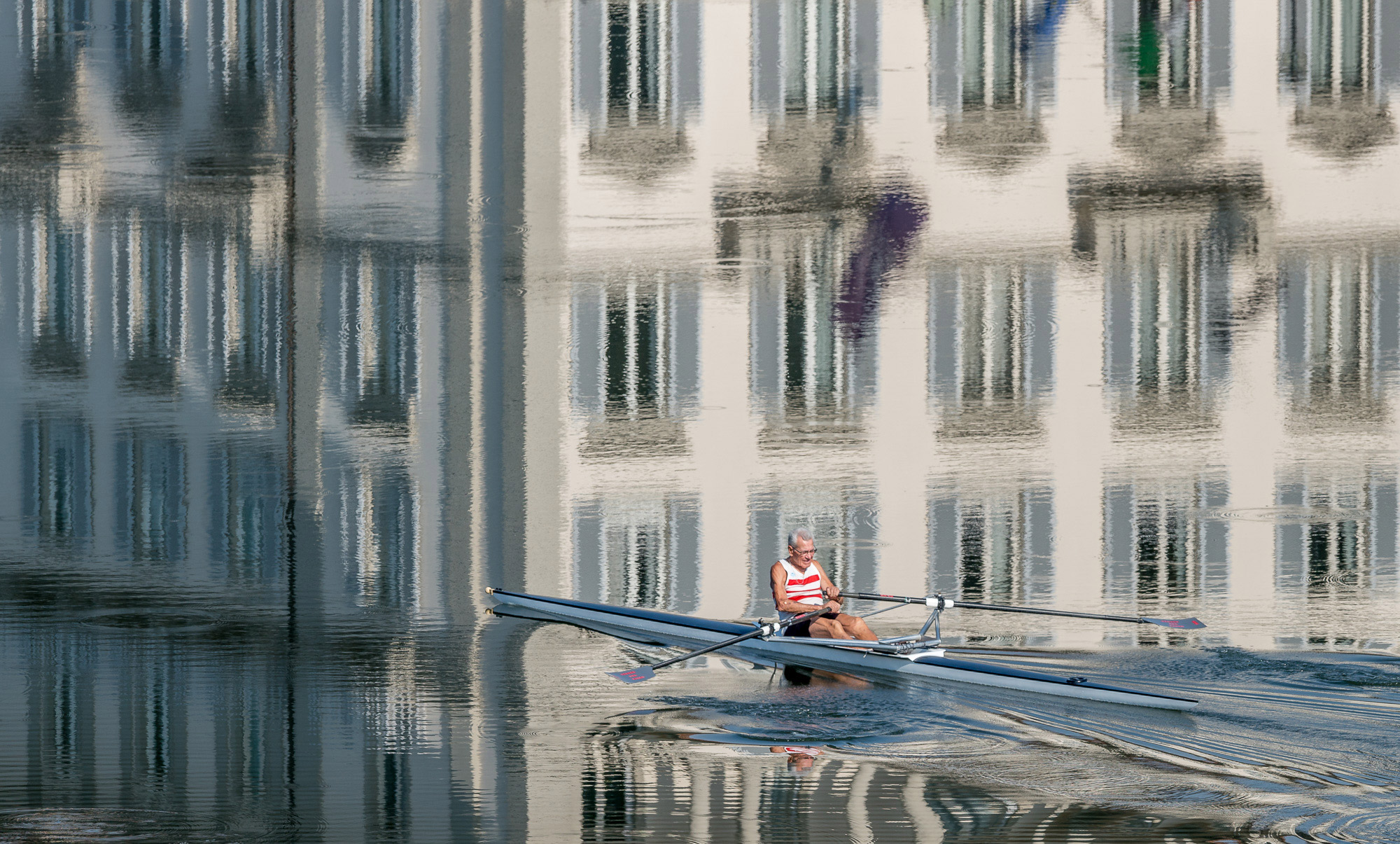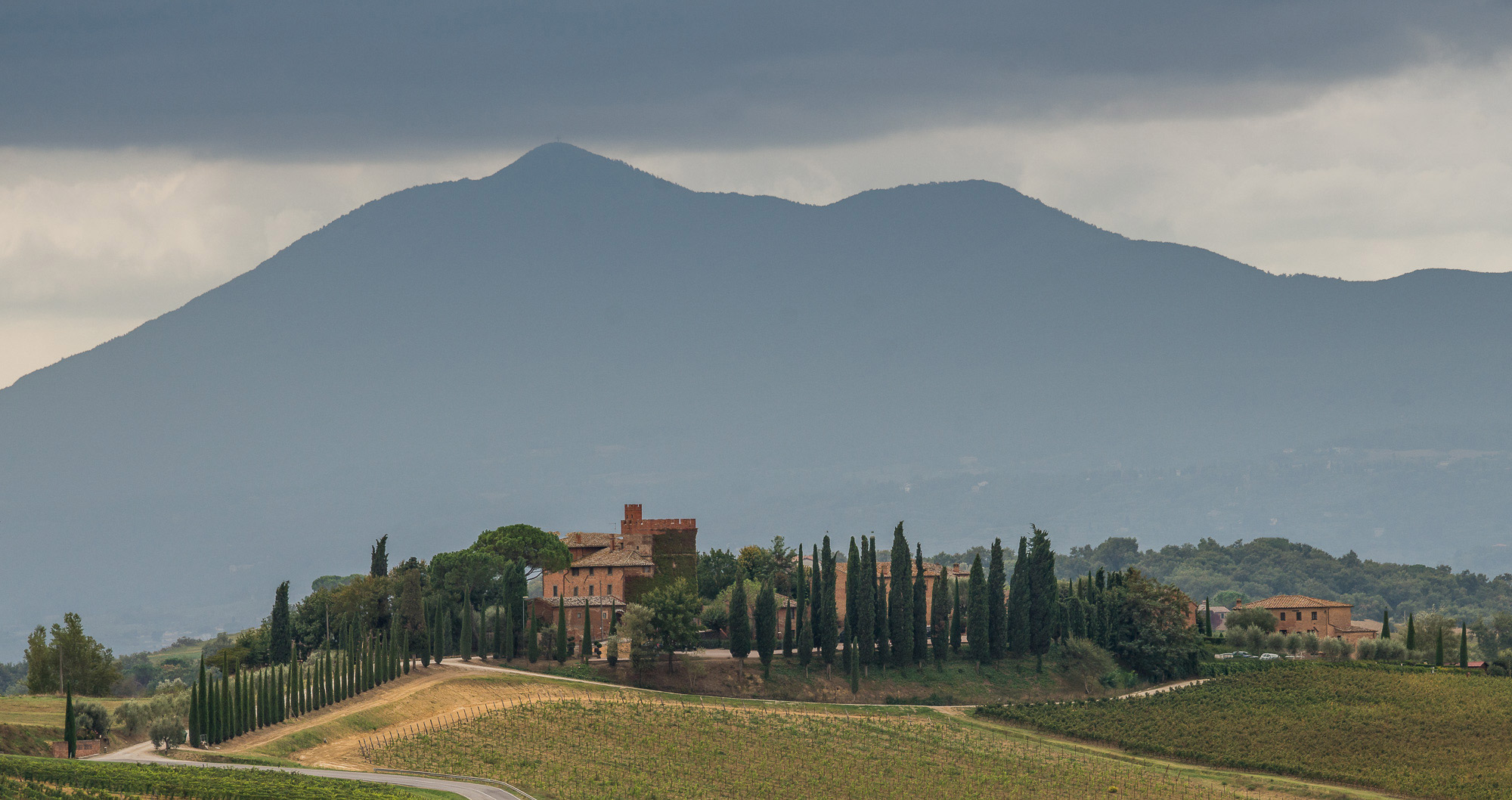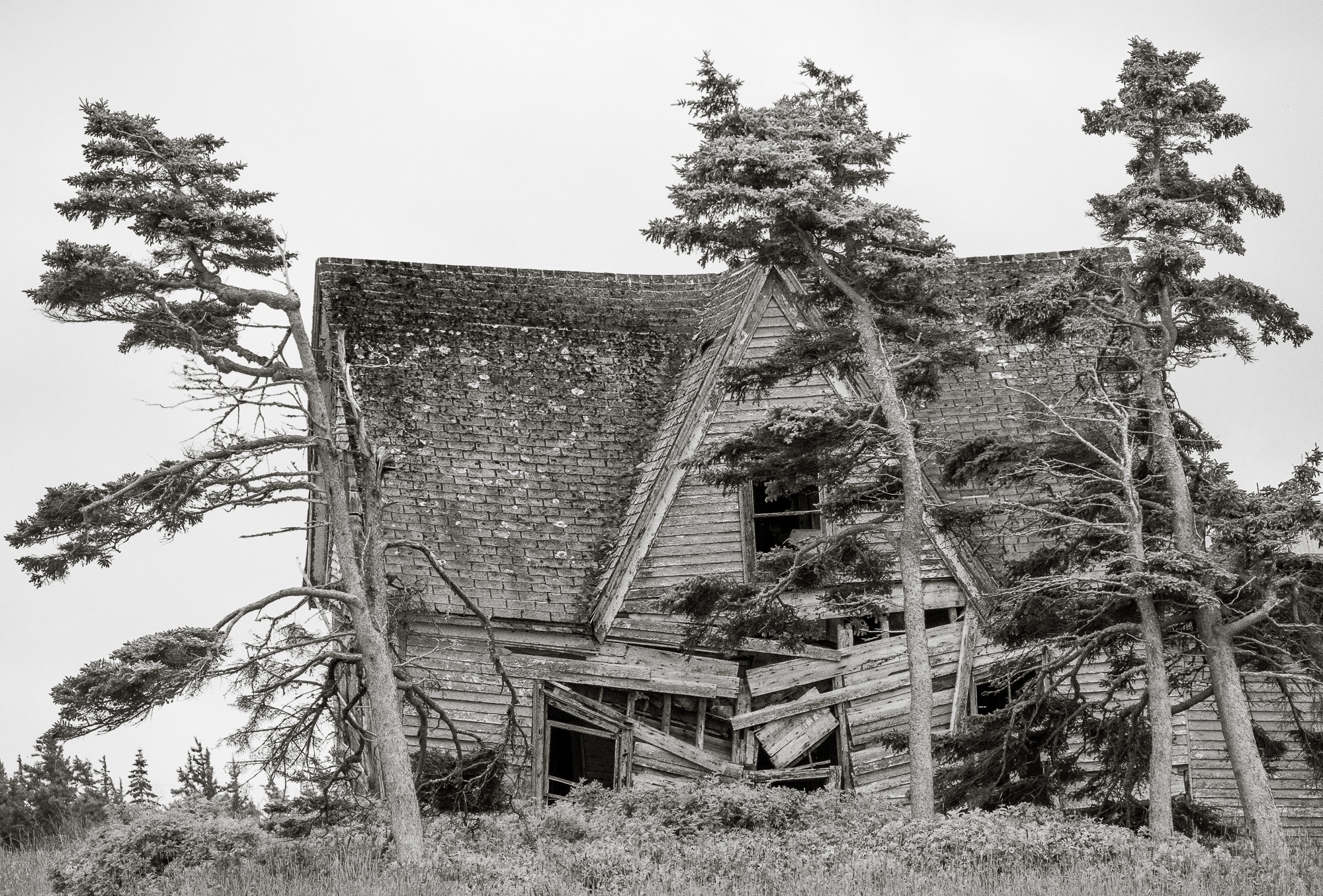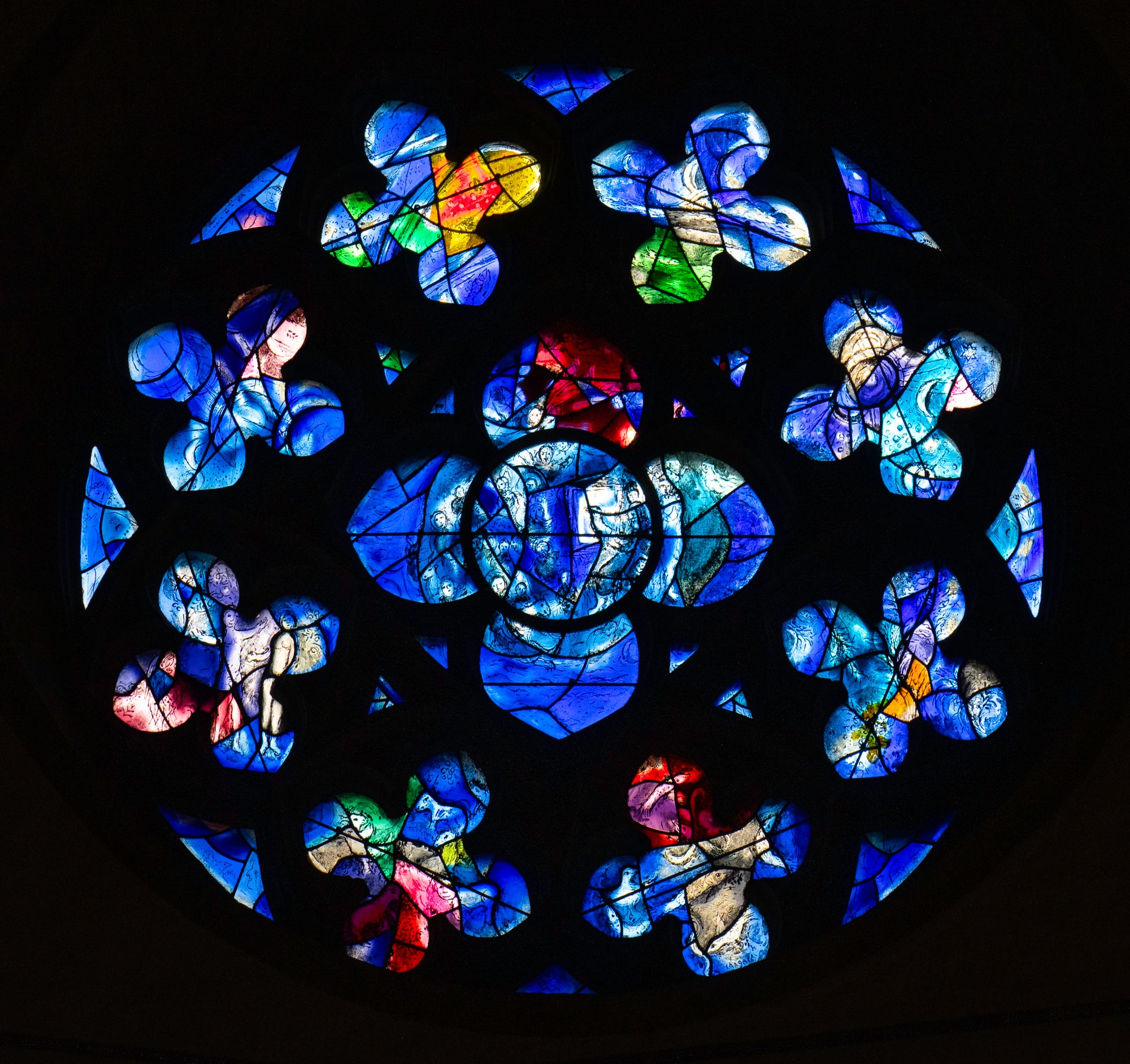The white sand is the essence of what makes the White Sands National Monument (WSNM) so very unique. Covering a total of 275 square miles (710 square kilometers) this National Monument is like no other place on earth since it is comprised of the World”s largest gypsum dune field on earth. It was designated a National Monument in 1933 and opened its gates to the public in 1934.
THE SHORT STORY
In short, Selenite is actually clear but as it erodes and is damaged by the wind, scratches form on its surface. This damage is what makes it appear white to the human eye since we are actually seeing millions and millions of scratched selenite crystals when looking at WSNM. These crystals can help make for beautiful early and late day images.
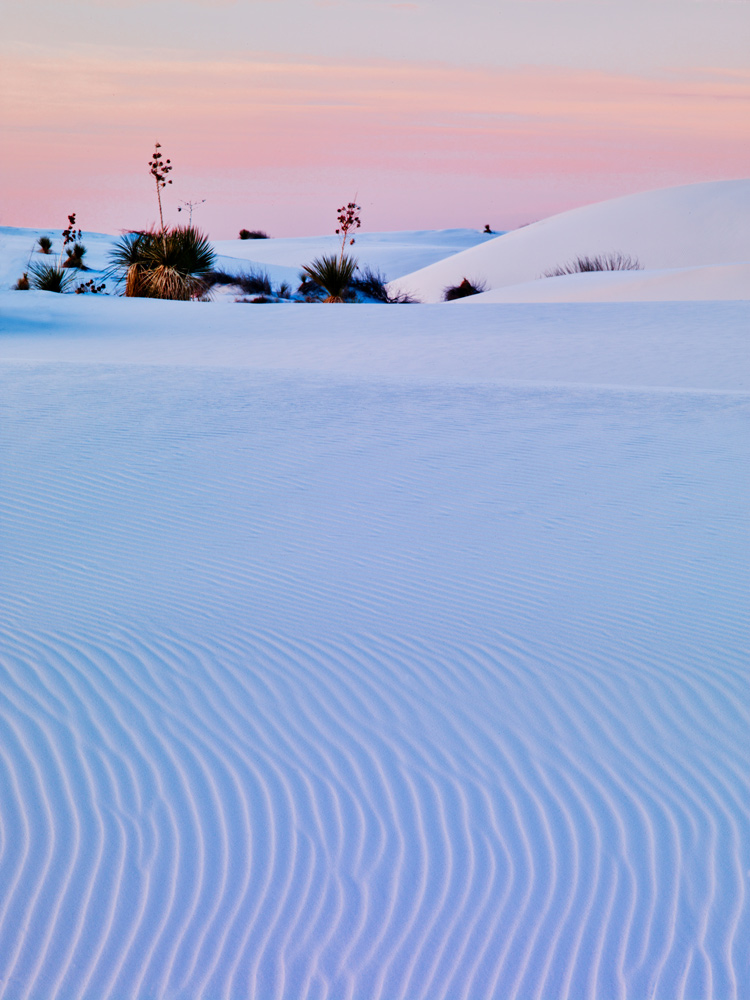

THE LONG STORY
Over 250 million years ago, an ancient sea covered most of the southwestern United States. During this era, the earth’s continents were joined together in one massive mega-continent, known as Pangaea. Part of the southwestern United States, including what is now southern New Mexico, was covered by a shallow sea, known as the Permian Sea. Over millions of years, rising and falling sea levels left behind thick layers of mineral gypsum and other dissolved minerals deposited on the seafloor. The rise and fall of the sea level millions of years ago started the process of making the gypsum sand that covers the W today. Many factors, including the latest ice age, had an effect on the formation of this magnificent landscape. The following explains through time the gradual transformation from sea to sand, and the amazing factors that allow this dune field to exist today.
About two to three million years ago the Rio Grande River flowed along the southern edge of the Tularosa basin and brought sediment and minerals downstream into the Tularosa Basin. So much sediment flowed downstream that it eventually blocked the basin’s outlet to the sea. Water trapped by this blockage started to collect at the lowest point in the basin and eventually formed Lake Otero, an ancient 1,600-square mile lake that covered much of the basin.
During the last Ice Age 40,000 to 12,000 years ago, the climate was much colder and wetter. With the ending of the last Ice Age, about 11,000 years ago the climate started to warm, where rain and snowmelt carried dissolved gypsum from the surrounding mountain ranges into the Tularosa basin and the gypsum runoff settled in Lake Otero. Later Lake Otero began to evaporate becoming a playa or dry lake bed.
As the climate became warmer and drier, the effects of sun and wind slowly began transforming this area into the modern Chihuahuan Desert after Lake Otero dried up. The dry portions of the lakebed became what we know today as Alkali Flat, while the smaller seasonal playa that remained formed modern Lake Lucero. As Lake Otero’s water disappeared selenite crystals formed on Alkali Flat. Strong winds carried the smaller pieces away and contributed to the breaking down of the crystals into small grains and polishing them into a brilliant white color.
Constantly pushed to the northeast by strong winds, the sand accumulated into larger dunes, which often moved several feet over a windy day or night eventually forming the famous white dune field of today.
Presently, rain and snow-melt from the surrounding mountains and upwelling from deep water within the basin periodically fill Lake Lucero with water containing dissolved gypsum. When the lake water evaporates, small 2-3cm selenite crystals form on the surface of Lake Lucero and Alkali Flat just as they have for thousands of years. Most of the crystal formation occurs when large floods concentrate the mineralized water every 10 to 15 years. Wind and water break down these crystals into progressively smaller and smaller particles until they are fine grains of white gypsum sand and eventually dust. It is this process that we see as white sand. 1
IMAGE CREATION AT WHITE SANDS
This area makes for very different though interesting and strange photographs mainly due to the stark whiteness of the dunes. Often Yucca plants will be seen sprouting up from the gypsum sands which can make for unusual image captures along with repeating and
rippled sand waves. Both sunsets and sunrises can lead to the very soft coloration of the white gypsum along with gentle curves and undulations of the sands. I have found that my captures take on very different appearances when shooting early, middle and in late daylight. I adjust them to taste. At times the sands will appear stark white, usually in the middle of the day, and at other times the dunes appear to be warmer in nature which can be a reflections from the pink sky and clouds during sunrise or sunset. Color balance can be crucial here. At times I leave images warmer which of course resembles sand dunes versus gypsum dunes for image variety. Toward the end of the day, deep shadows often exhibit cool, blue tints from the sky even when the sand takes on a pinkish appearance.
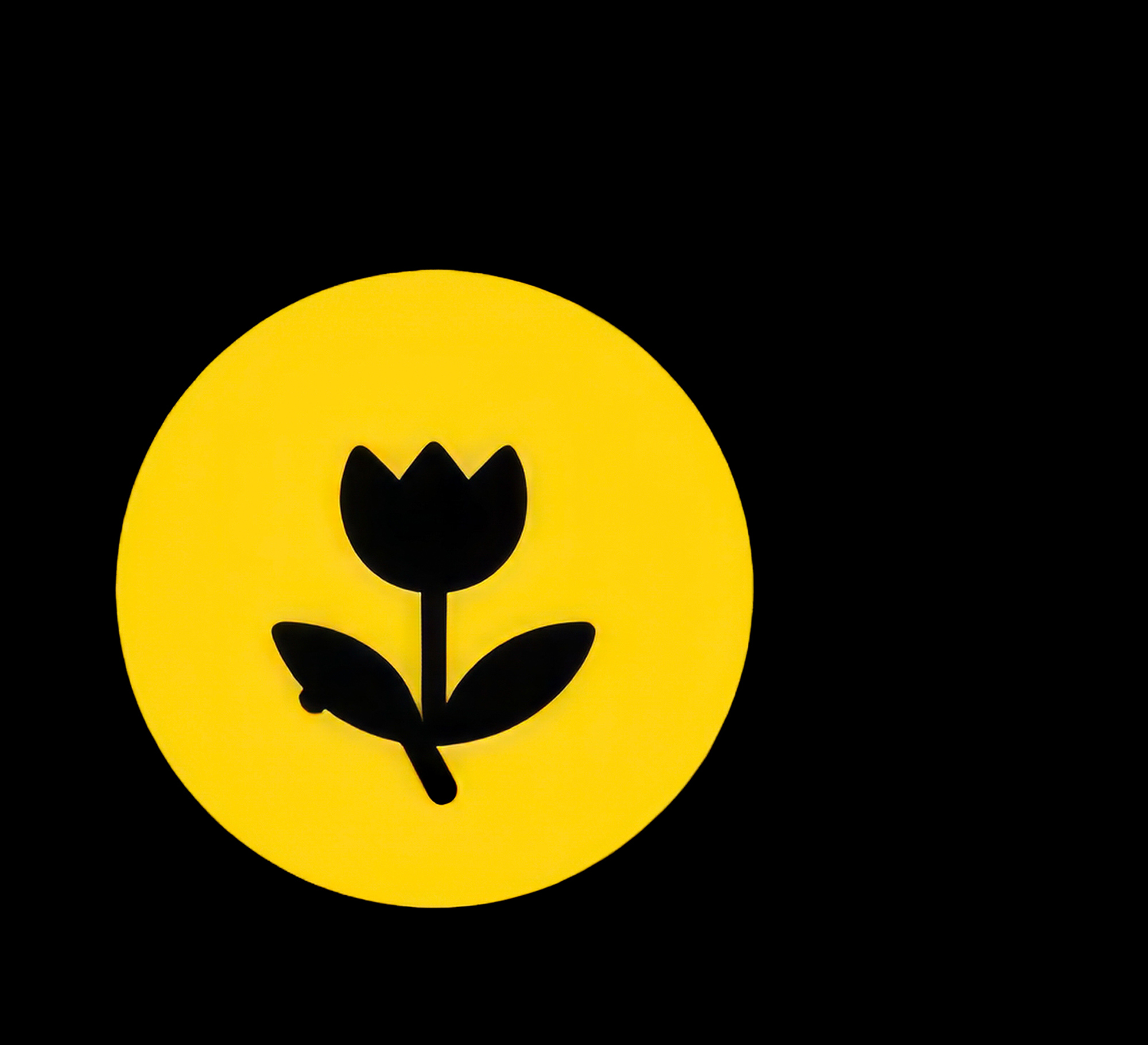

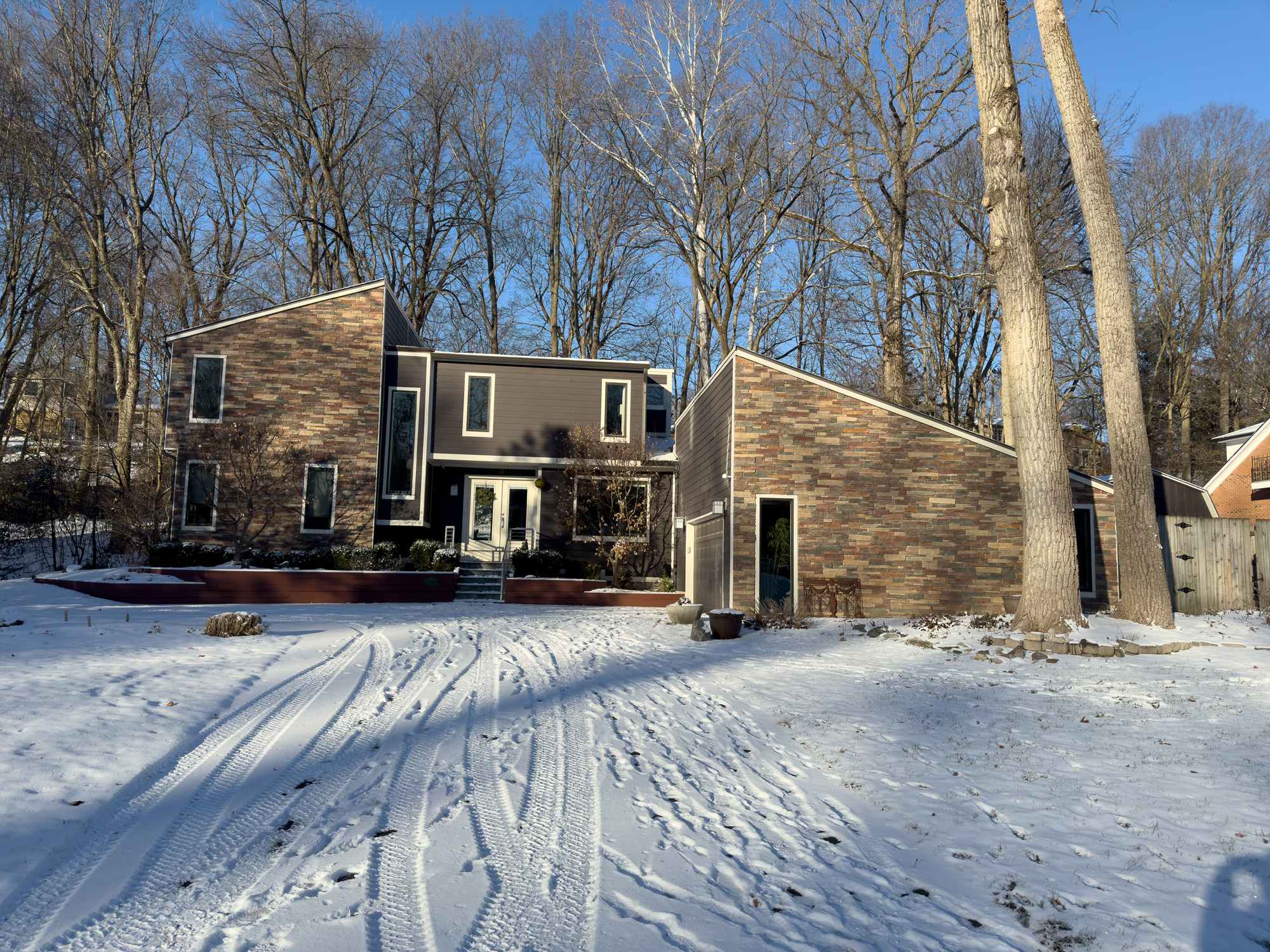

Images can be captured with interesting shadows in them, usually from nearby Yucca plants. At times these types of images lend themselves to B&W imagery.


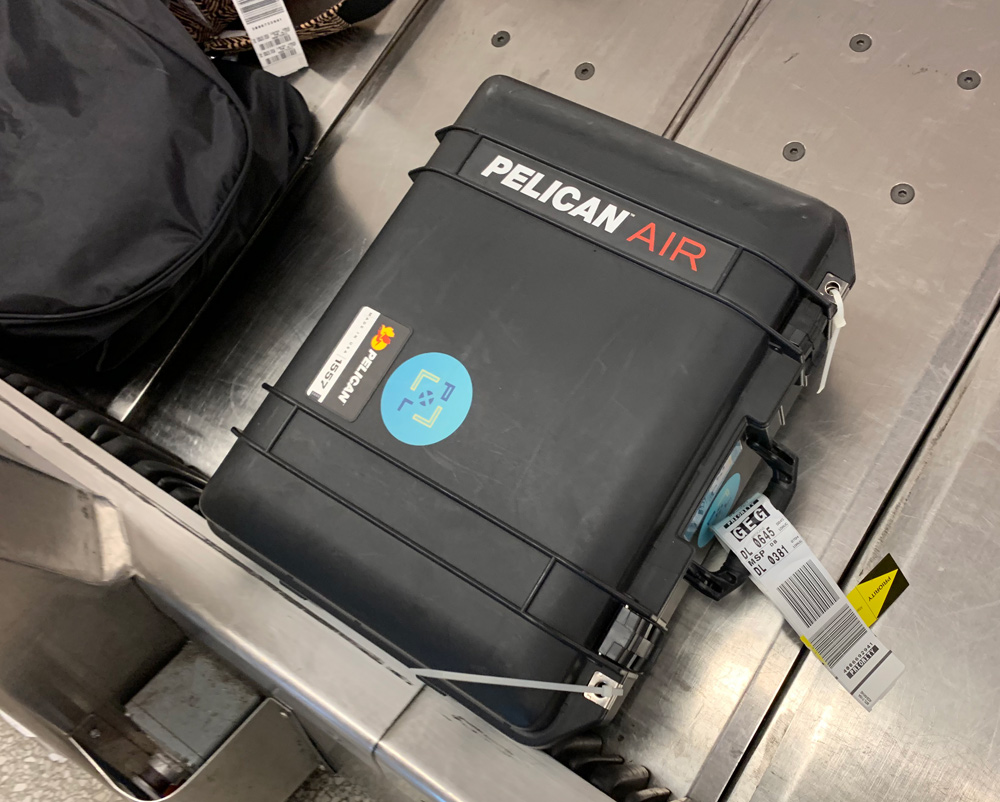

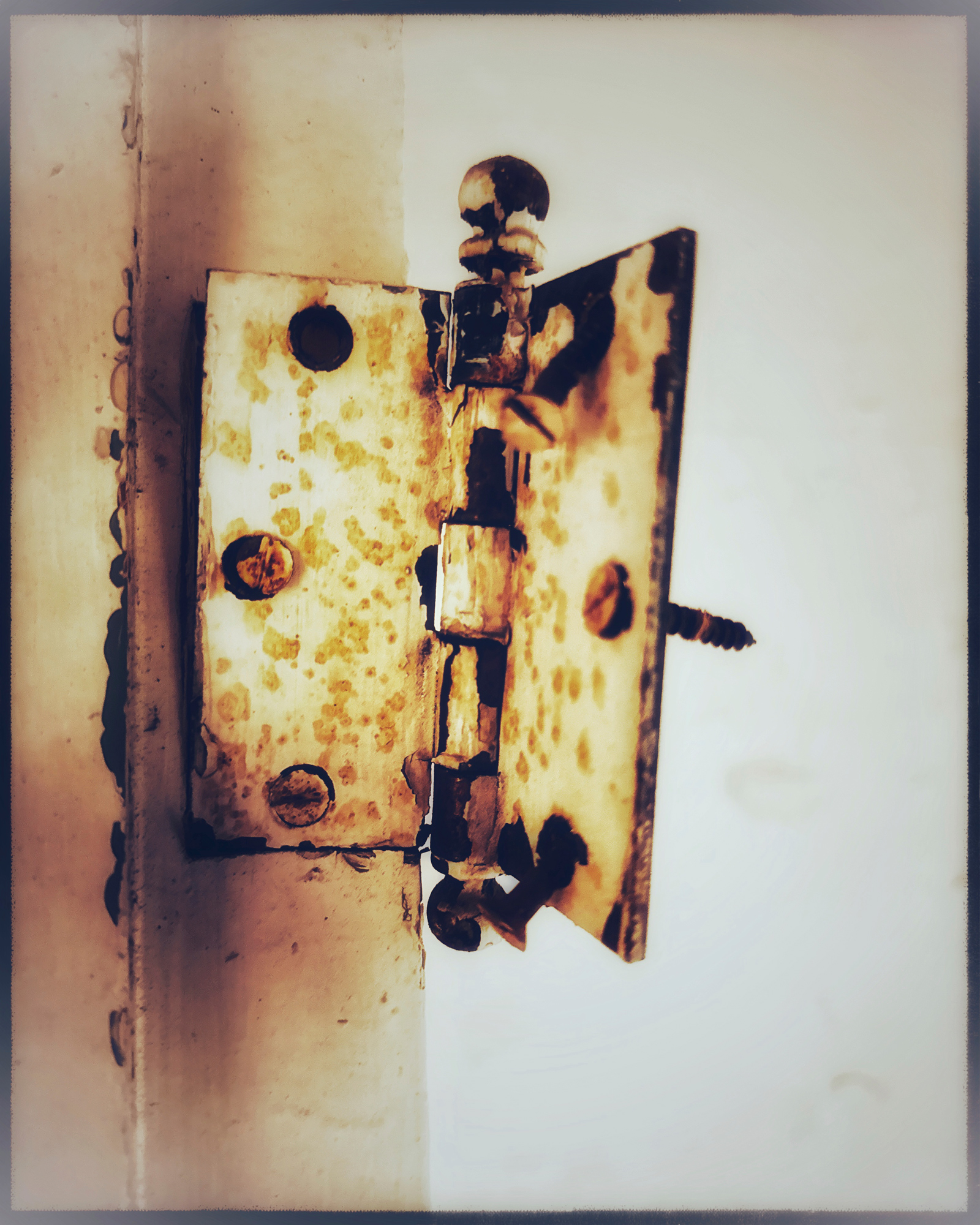

Plan on walking a lot during a photo adventure at White Sands NM and always be aware of where you are leaving your footprints on the sands which can easily ruin an image calling for solitude in the unbroken ripples of white sand. A full moon is a bonus and early morning side lighting can make for interesting captures. Sometimes images look more like snow rather than gypsum sand. Abstract conversions can also be interesting to create.


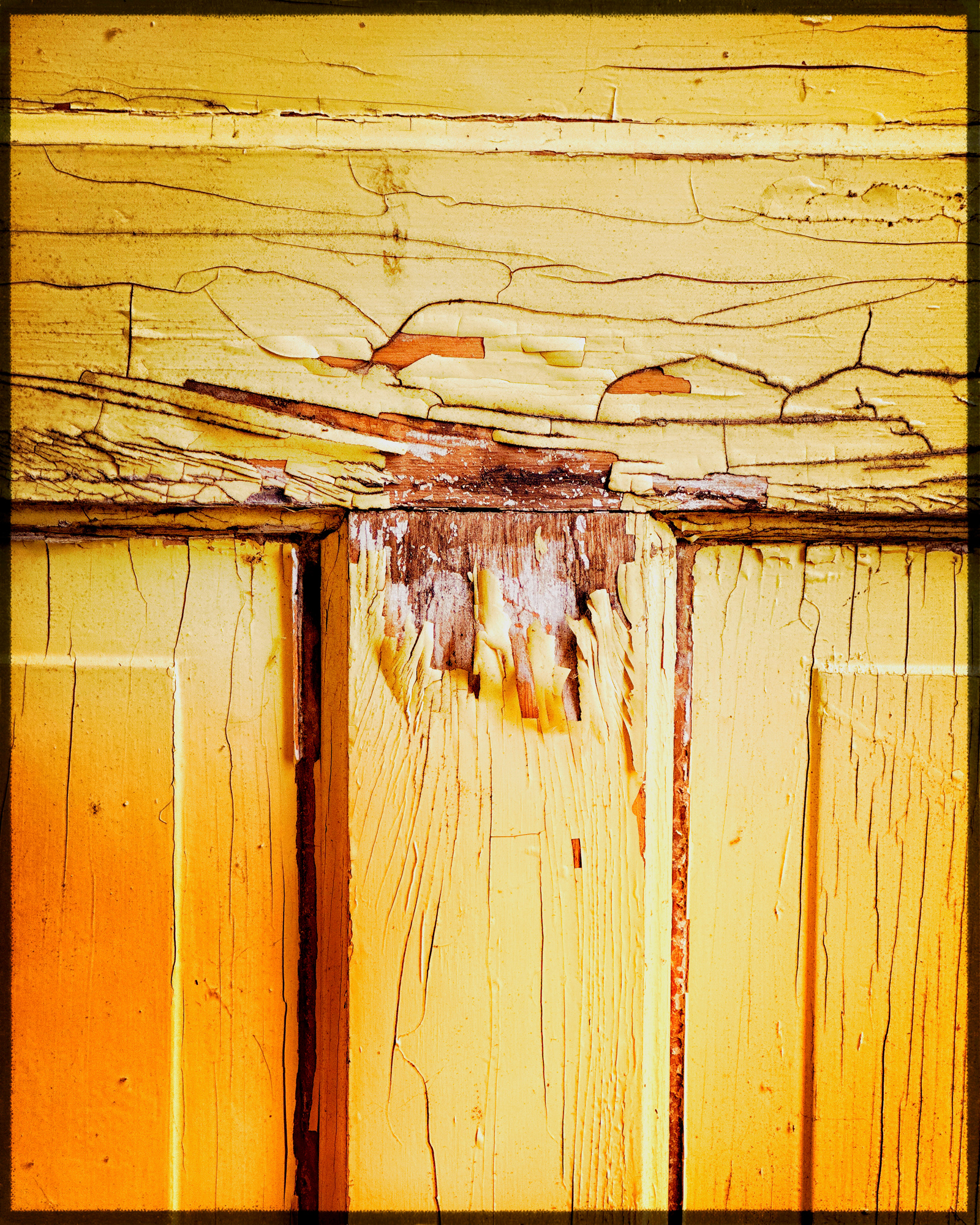

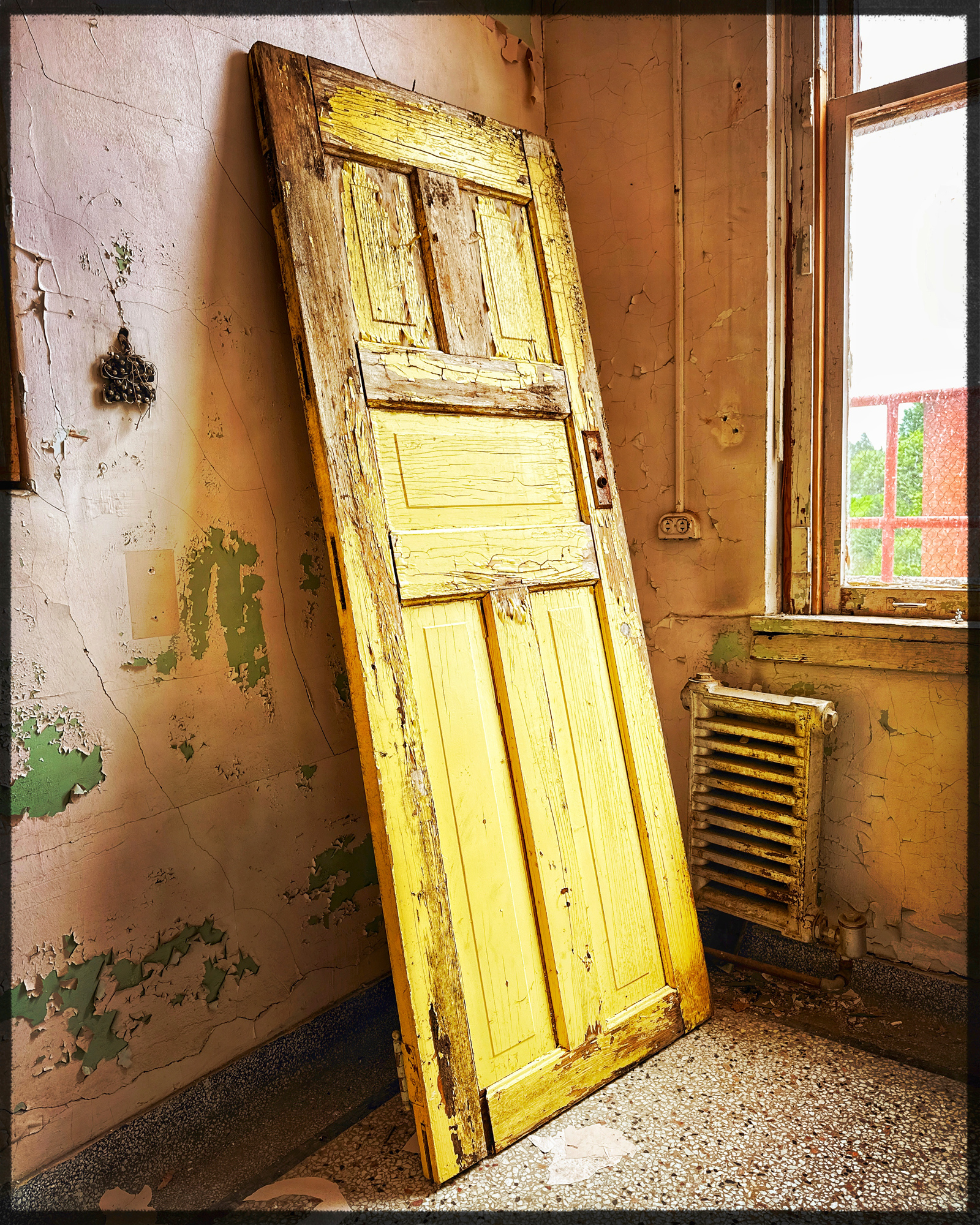

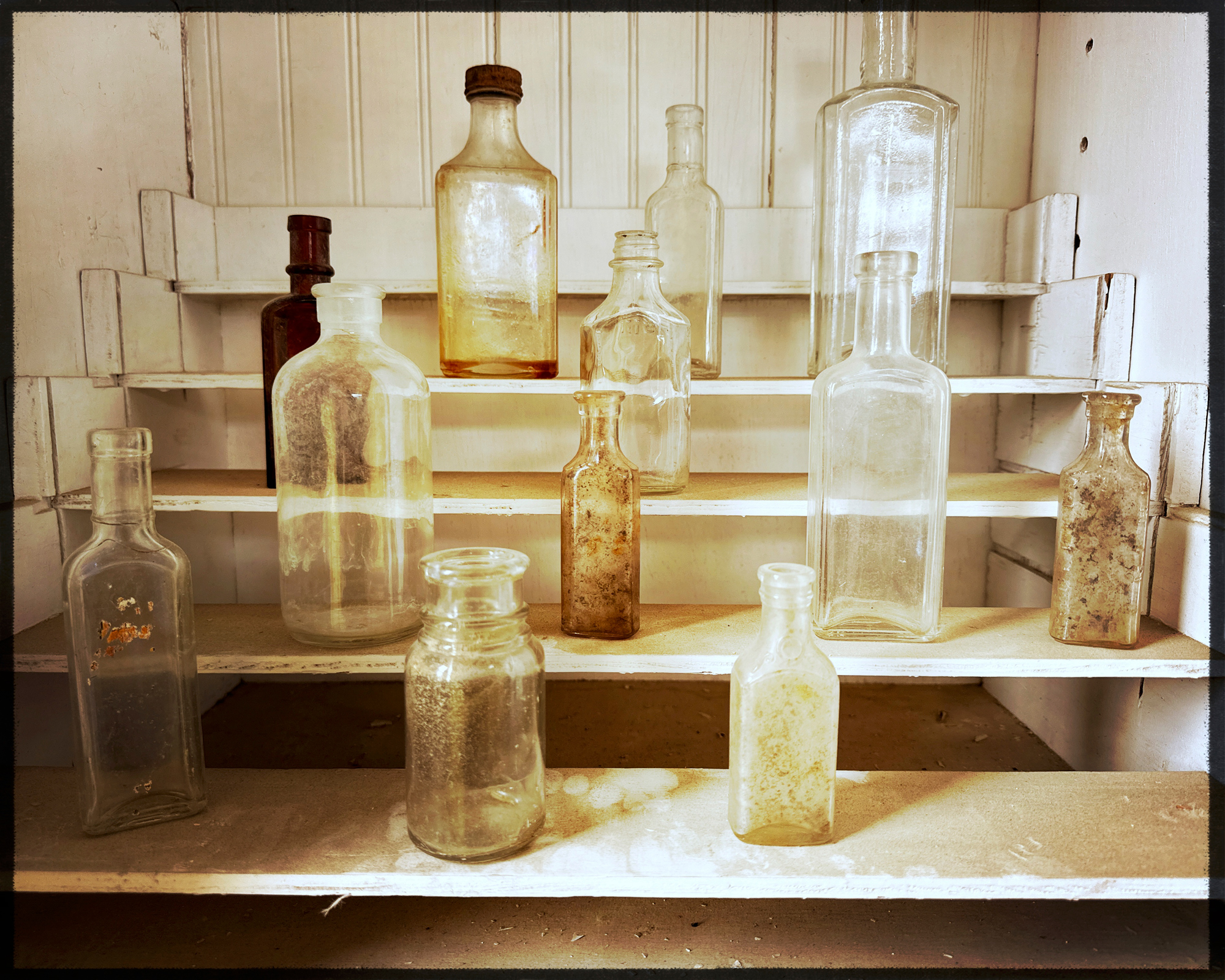

White Sands Missile Range regularly conducts missile tests. For visitor safety, the only road into the WSNM dune field may be closed for periods of up to three hours during missile tests. Monument staff is usually notified two weeks in advance of scheduled tests. However, at times notifications from White Sands Missile Range may be received just 24 hours in advance of a test. Monument staff work to inform the public as far in advance as possible for upcoming tests and subsequent WSNM closures. Always check the WSNM website for any planned closures in advance of heading West out of Alamogordo NM, the nearest city to WSNM which is past Holloman Air Force Base. 1.)
If your White Sands planned visit dates or times are changed by a missile test there other venues nearby such as the Three Rivers Petroglyph Site (about 40 miles north of Alamogordo) which has more than 21,000 petroglyphs of birds, humans, animals, fish, insects, and plants, as well as numerous geometric and abstract designs scattered over 50 acres of New Mexico’s northern Chihuahuan Desert. The petroglyphs at Three Rivers date back to between about 900 and 1400 AD and were created by the Jornada Mogollon people who used stone tools to remove the dark patina on the exterior of the rocks. Many of the petroglyphs can be easily viewed from a trail open to the public which winds its way through the multitude of rocks for nearly a mile.
While inside WSNM, I found that it might be a good idea when leaving your car along the roadside to mark its location with a handheld GPS or other devices so you know exactly where you left your car. The flat light combined with slightly undulating sands going on for miles and miles can easily play tricks with your body’s internal navigation. In addition often one will climb 15-20 feet up the dune beside the road where the almost flat top of various dune fingers can extend for miles making for terrific explorational opportunities and easy walking. Just always remember your way back to the car even if it involves shooting an azimuth with a handheld compass. More than once I was actually close to my car but could not see it. Using the car’s remote clicker can save one a lot of walking time once you are close enough to the car in order to hear the car remote beep you in the direction of the car.
Also, it is best to avoid changing lenses while out in the dunes if at all possible due to winds continually blowing. Once back in the car or hotel, it is advised to have a brush handy as I found most lens blowers are just not strong enough to dislodge all the gypsum particles.
Even though color captures are best for sunrises and sunsets, often monochromatic or achromatic cameras are very useful during midday shoots when luminance values rule the day. I mostly prefer using the Leica Monochrom M camera during the day for B&W captures, but occasionally convert color images to B&W. My next trip back I will use the Phase Achromatic digital back on an Alpa technical camera during the day. At times images lend themselves to a semi-abstract presentation. I adjust my images to my liking and style which can most certainly be different than yours.
MORE IMAGES:
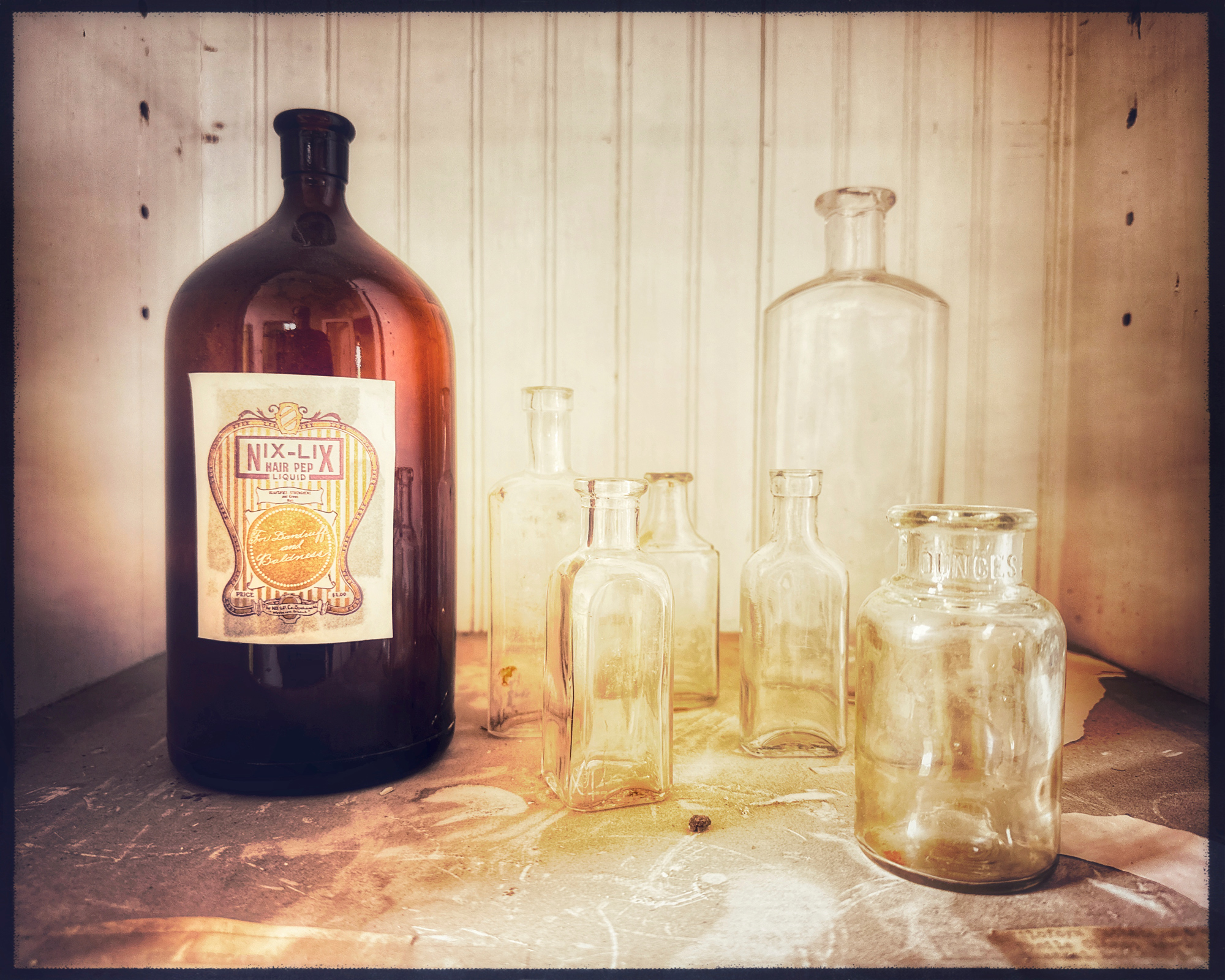

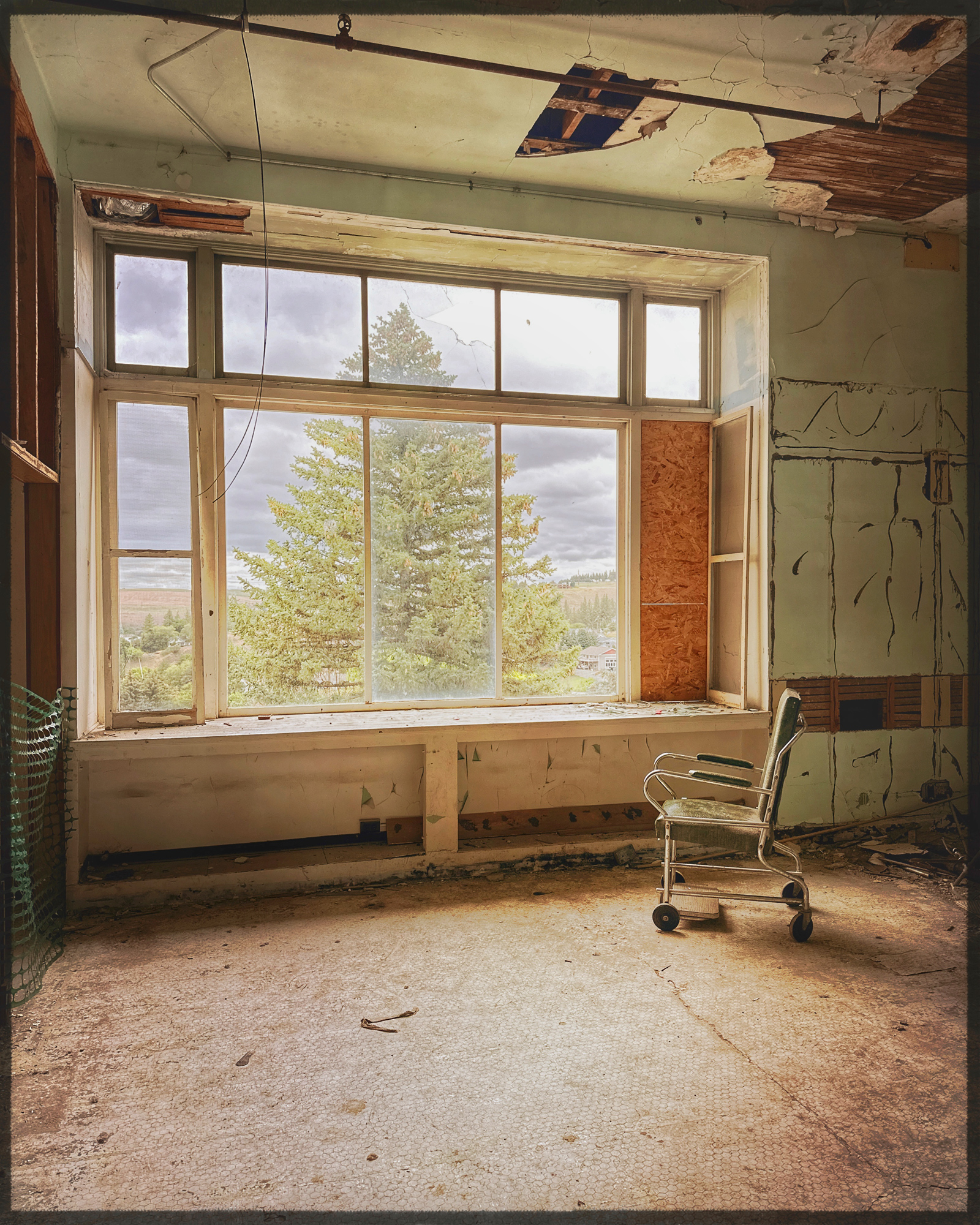

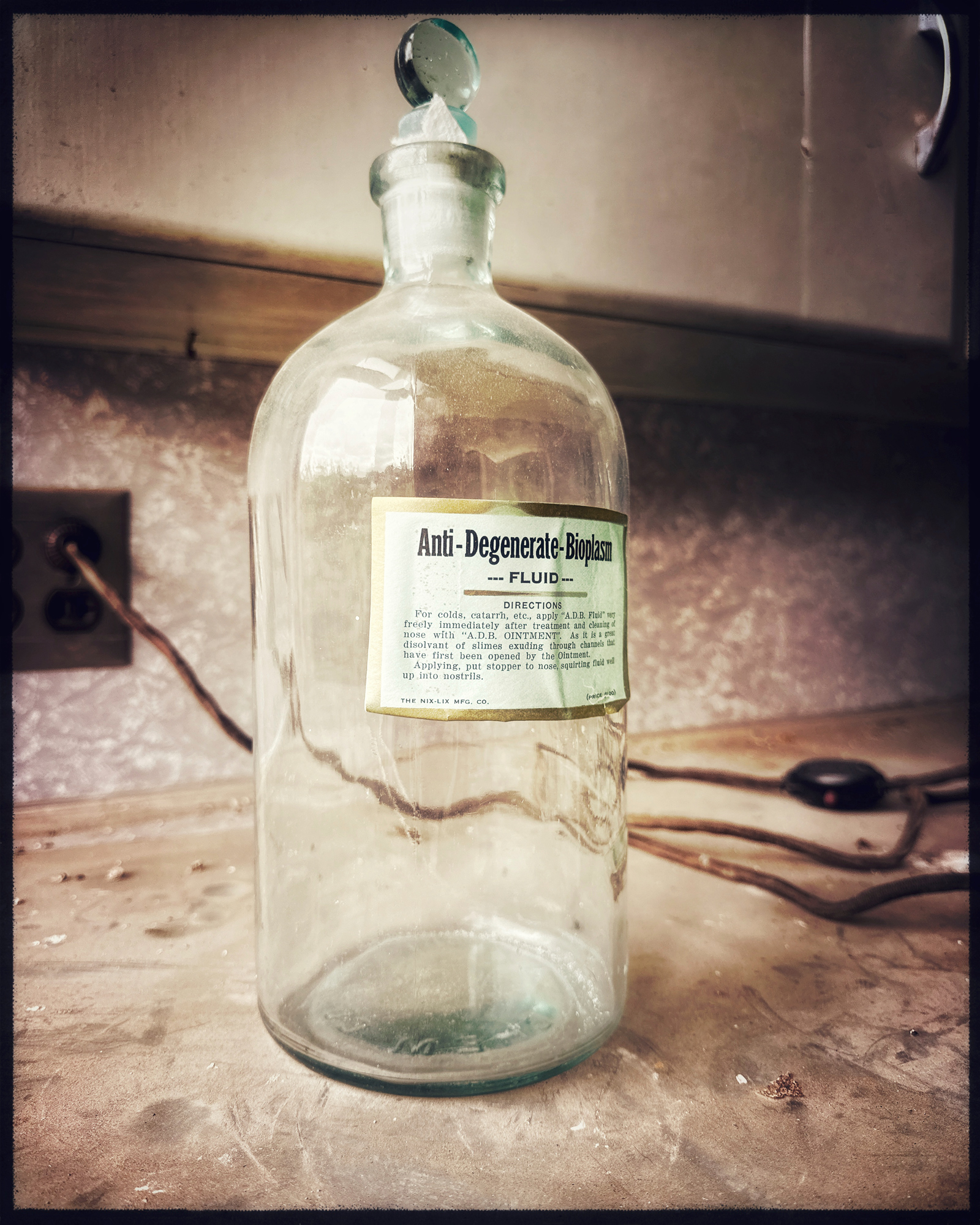

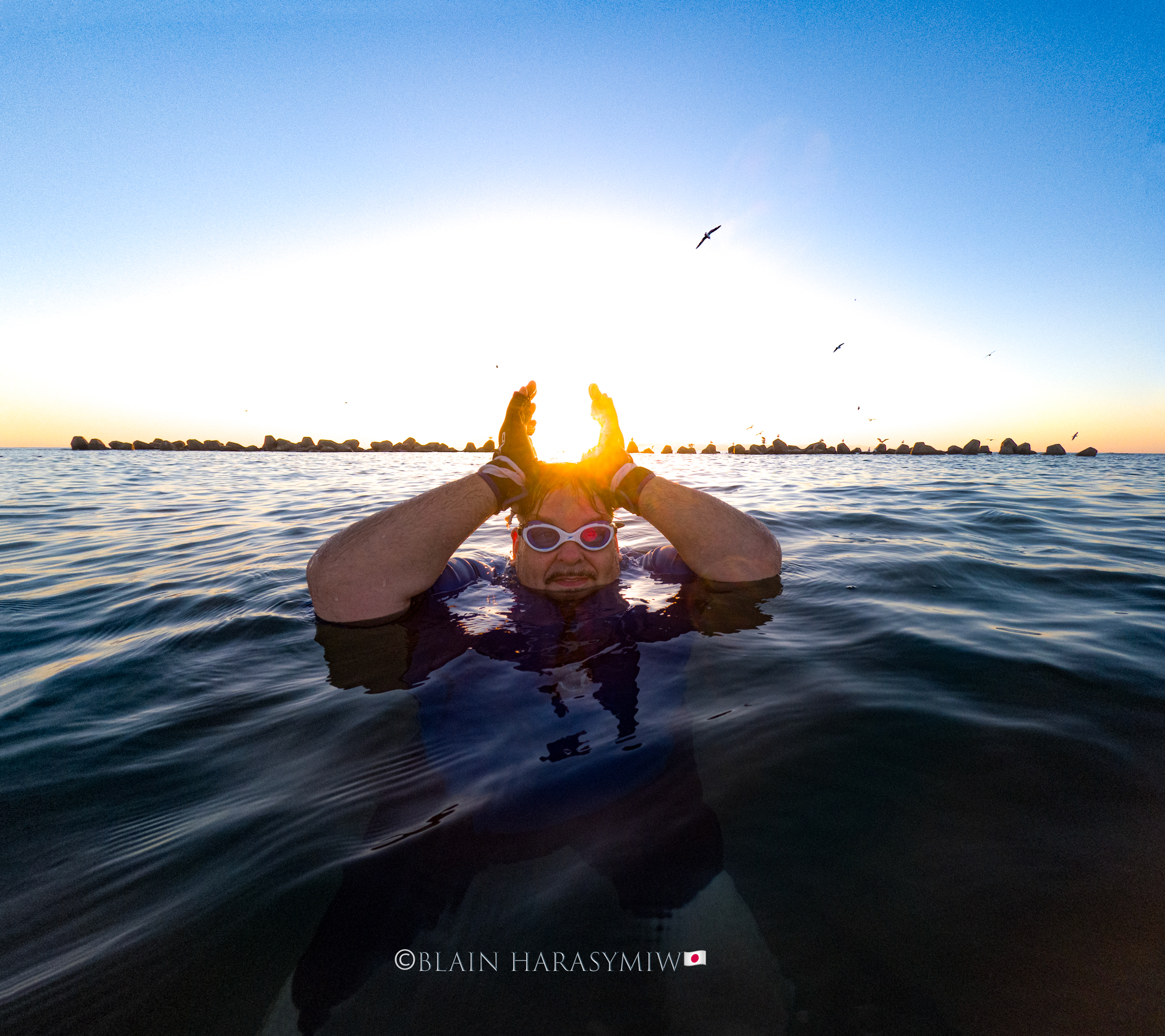

1.) Sources: Wikipedia and The National Park Service
Louis Foubare
November 2019
Read this story and all the best stories on The Luminous Landscape
The author has made this story available to Luminous Landscape members only. Upgrade to get instant access to this story and other benefits available only to members.
Why choose us?
Luminous-Landscape is a membership site. Our website contains over 5300 articles on almost every topic, camera, lens and printer you can imagine. Our membership model is simple, just $2 a month ($24.00 USD a year). This $24 gains you access to a wealth of information including all our past and future video tutorials on such topics as Lightroom, Capture One, Printing, file management and dozens of interviews and travel videos.
- New Articles every few days
- All original content found nowhere else on the web
- No Pop Up Google Sense ads – Our advertisers are photo related
- Download/stream video to any device
- NEW videos monthly
- Top well-known photographer contributors
- Posts from industry leaders
- Speciality Photography Workshops
- Mobile device scalable
- Exclusive video interviews
- Special vendor offers for members
- Hands On Product reviews
- FREE – User Forum. One of the most read user forums on the internet
- Access to our community Buy and Sell pages; for members only.






